str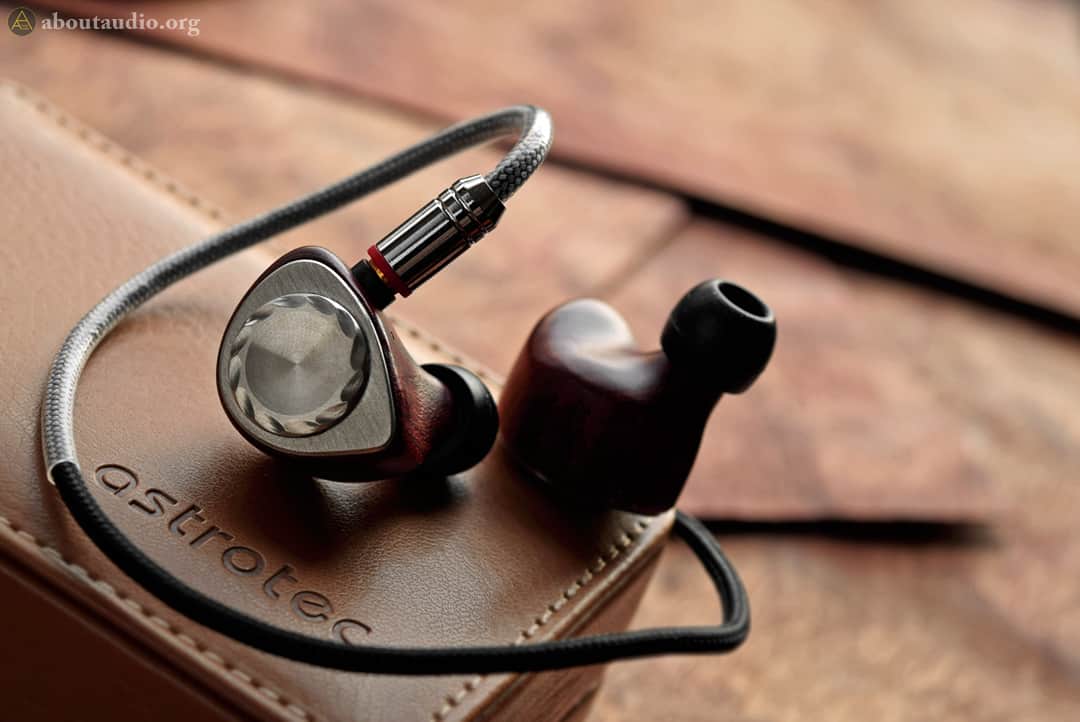
Astrotec Phoenix Review: Game-changing comeback
Astrotec is quite an OG Chinese brand that has been hanging around here in the portable audio market. However, despite their fine product quality and well-established reputation in mainland China, they have not gained enough attention from the overseas markets for a while. Thanks for the Lyra earbud series giving a good nudge to the overseas market for attention, Astrotec is now starting to put more of their focus on the overseas market, starting with their latest and ultimate flagship model – Phoenix.
I was able to have several opportunities to test out Phoenix before its final production and I was especially looking forward to talking about these. And the reason, spoiler alert, is because I was extremely satisfied with its sound even during the prototype days. Let us go through the features and specs, and most importantly, the sound impressions as well.
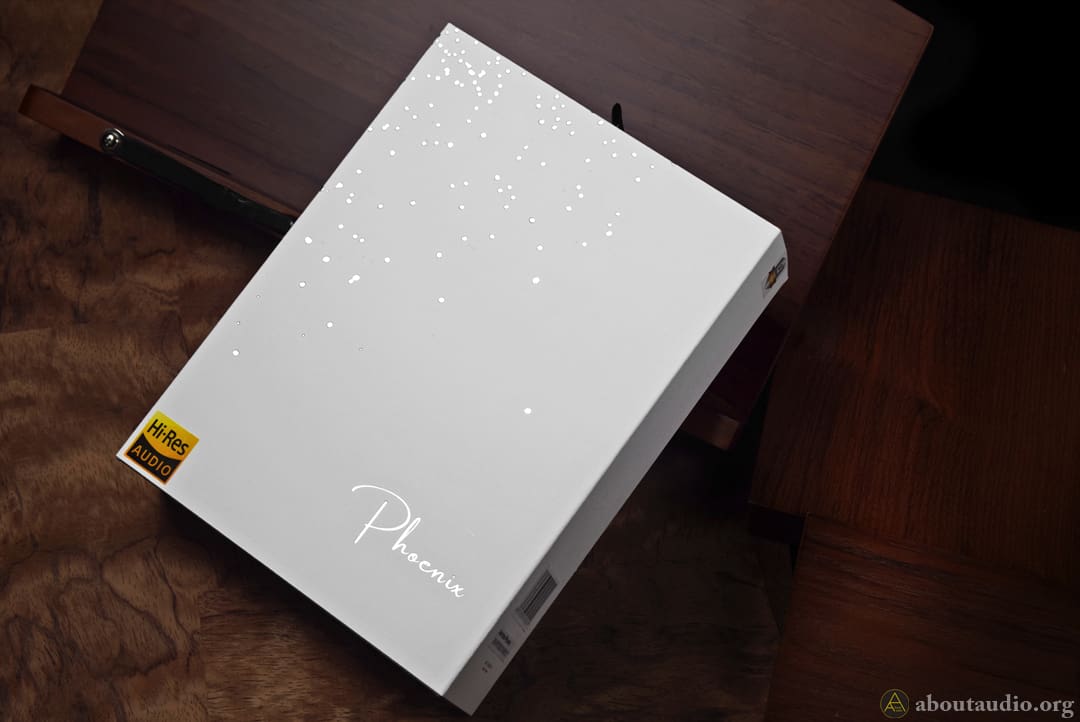
Packaging – 1/2
The outer sheet of the packaging has a simple (or somewhat plain) white cover with a touch of elegance, by adding some silver sparkles raining from the upper left. Once removed, the main box appears that includes the IEM and the accessories. Other than the earpieces, the package includes a stock 3.5mm cable, 3 pairs of Sony hybrid silicone tips, 1 pair of foam tips, 1 pair of earphone mittens, a cleaning tool, a leather hard case, and some paperwork. The earphone mittens are near identical to the ones from Campfire Audio. It is good to see more companies started to pay attention on protecting high-end earpieces from getting scratched or damaged.

Packaging – 2/2
However, the one complaint is that the mittens are a little small and tight to fit in the earpieces. Still very much possible to snug them in without a hassle yet it still keeps me aloof from using those on Phoenix as the earpieces would still get brushed by the meshes every time I put or take out. The complaint continues and escalates into a major one with the carrying case for its narrow storage space.
Moreover, there is a rather thick pillar popped out inside the middle, basically making the case unusable – not only Phoenix but also the IEMs that are even smaller and slimmer in size. Quite a bummer as the leather case is very nicely made and feels good to the touch, but only to be used as eartips storage. Astrotec addressed that they have revised the production plan and to remove these pillars since the second batch, but storing Phoenix into these cases would still be a tight one. But overall, it is a mediocre package.
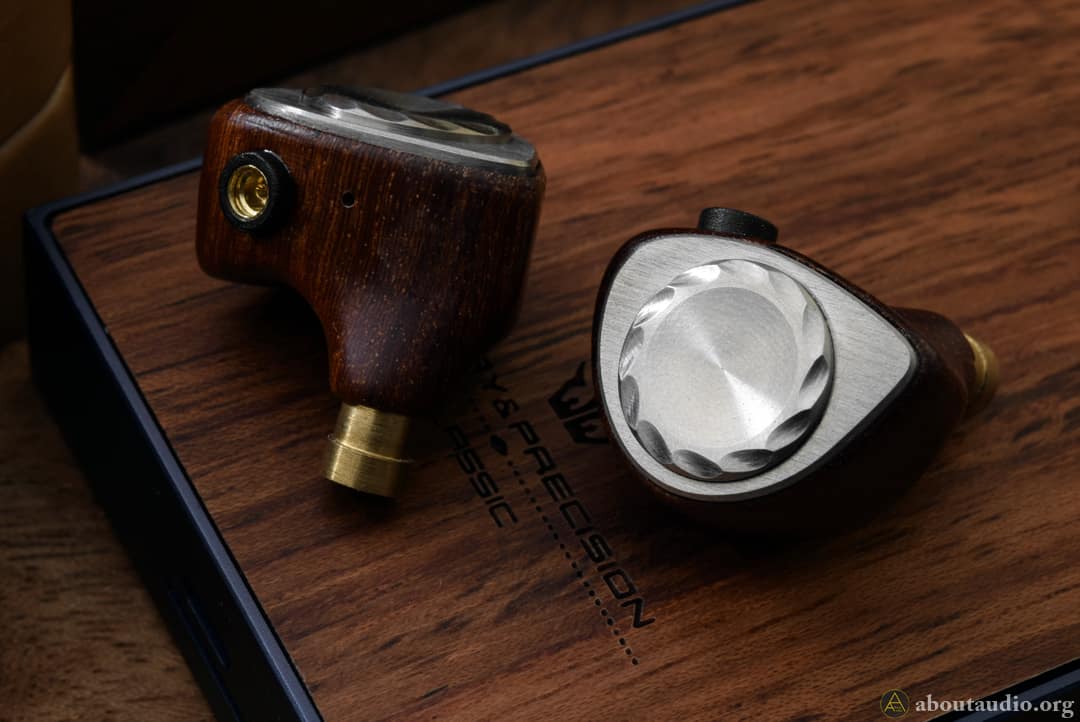
Earpieces – Design
Being made of authentic rosewood, each and every Phoenix earpieces are handcrafted which are then topped with metal faceplates made of aerospace titanium-aluminum alloy. I like the fact that they gave an additional layer of CNC’d metal topping, rather than just having a plain hairline faceplate. There is already a reasonable amount of IEMs using wood shells, but most of them are fully coated with thick resin, which makes Phoenix extra appreciable as the wood textures are clearly sensible (also worth mentioning that each earpiece is unique to its appearance).
Since that, the earpieces smell and feel natural and organic, which has been fairly easy to find from sounds, but definitely not from the earpieces itself! But still, the earpieces are still appropriately treated with a minimum amount of coating to prevent the earpieces from corrosion or cracking. These preservation treatments make it possible to both protect and expose the woods, it would still require some degree of caution while treating and storing them – lightly oiling the earpieces every now and then as well as including a Silica Gel in the storage case would do more than enough. Some small vestiges could be found from the outer side of the shells (mostly found where the wood meets the faceplate), though I would consider this acceptable as they are handcrafted and since the inner sides are flawlessly polished.

Earpieces – Spec
Now looking at the specifical perspective, Phoenix sports a 2EST+1DD hybrid design, using two Sonion electrostatic as super tweeters and a large 10mm dynamic driver for the lows and mids. The earpieces are detachable by MMCX sockets which are slightly extruded from the wood shell to prevent the woods from getting exposed to pressure.
But of course, this does not degrade the convenience or the actual usage at all. So the wood shell contributes to the sound to create a specific sound that Phoenix portrays, but so does the nozzles. With a dimension of around T400~T500, the nozzles are made of brass which are also purposely chosen for Phoenix’s specific tuning. Wood and brass… seems like this is some sort of a matching rule for aiming a natural tone and sound.
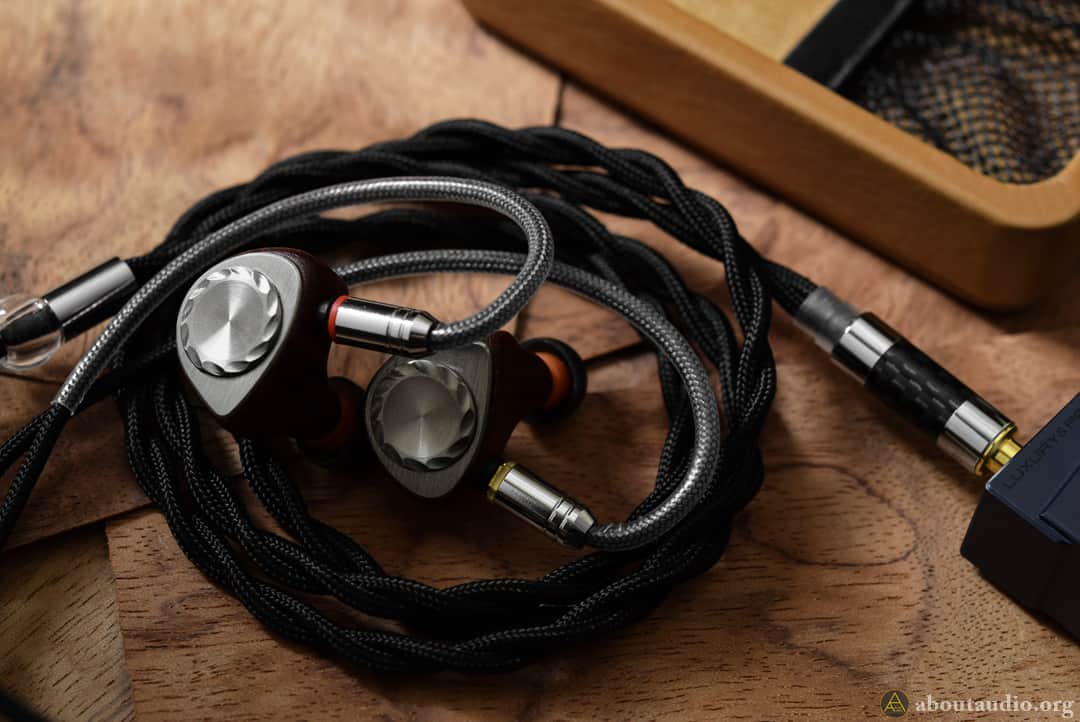
Cable
The stock cable has also stepped up with its quality. The 3.5mm cable is comprised of 6N OCC and Kevlar mixture, which are then shielded with fine fabric. The fabric shielding is flawlessly done without any loosen or poking out strands and feels dull quite durable against moisture or bending. The weight is just around normal, not light as air but definitely not weighty. The cable is also soft and does not cause any microphonics.
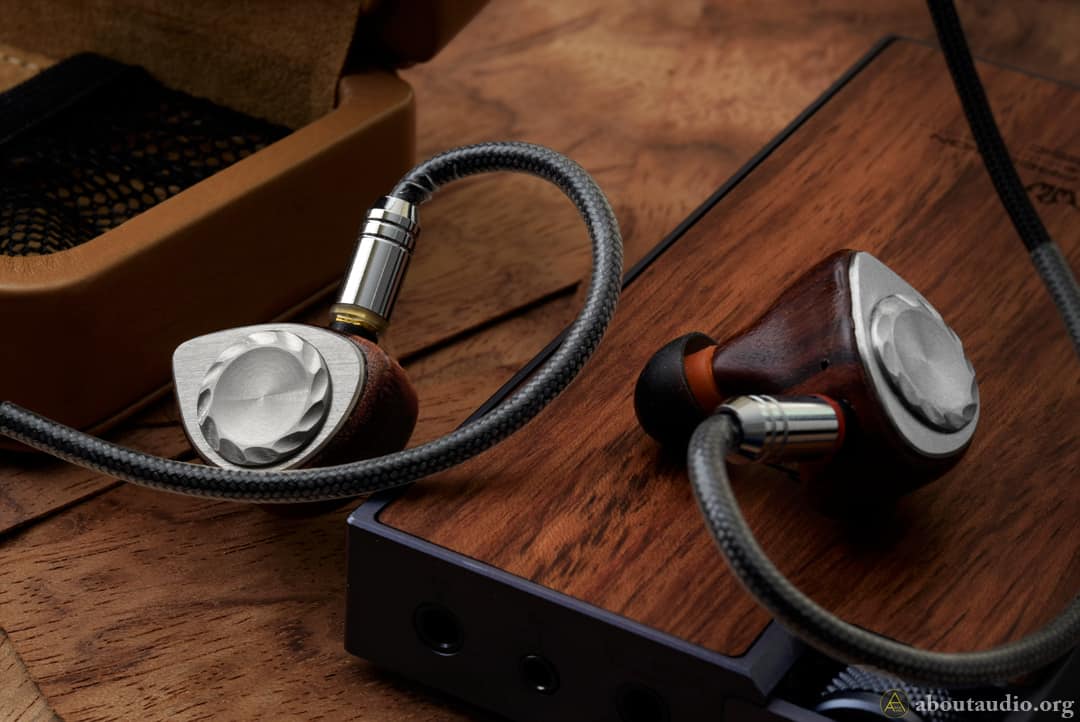
Sound impression – Lows
Bass is full-bodied and basically huge, really huge. Yet it does not feel fat or particularly bulged out in certain bass range. The sub-bass dives towards the ultra-lows very stable and linear without any audible dips or humps. Once it deeply reaches the rock bottom of the ultra lows, the bass vastly spreads out towards all directions, fully packing up the outer headroom. The bass dives linearly, keeping all bass ranges equally prominent – even til the ultra lows which is pretty remarkable. Though what I really like is that the bass always remains on the lower side of the sound stage and does not mess up with the upper ends. Plus, Phoenix has a huge body that would normally come out from a thundering, hardcore bass-heavy IEMs, yet the bass quantity is extremely well controlled and keeps a stable, calm attitude. No fatty bass lines, no loosen reverbs, no dull textures.
The bass that Phoenix presents show high contrast in its depth and despite the deep and vibrant ultra lows, neither the ultra lows or upper lows are bulgy. The bass flows are linear throughout the range along with appropriately exposing all the grainy bass textures and rumbles. Again, I was very impressed with Astrotec’s work for enabling Phoenix to create a bass that has the same level of depth, size, and ultra-low rumbles without actually flooding with bass quantity. Now do not get me wrong, the bass quantity is more than enough, having it a little more boosted from those slightly v-shaped signatures, but not just like the hardcore basshead IEMs like Empire Ears Legend X or Rhapsodio Zombie MK8. The overall balance for the referred IEMs is highly weighted on bass (in fact almost fully dedicated to bass) while Phoenix still persues to keep the overall balance, lows/mids/highs, all harmonically and similarly balanced.
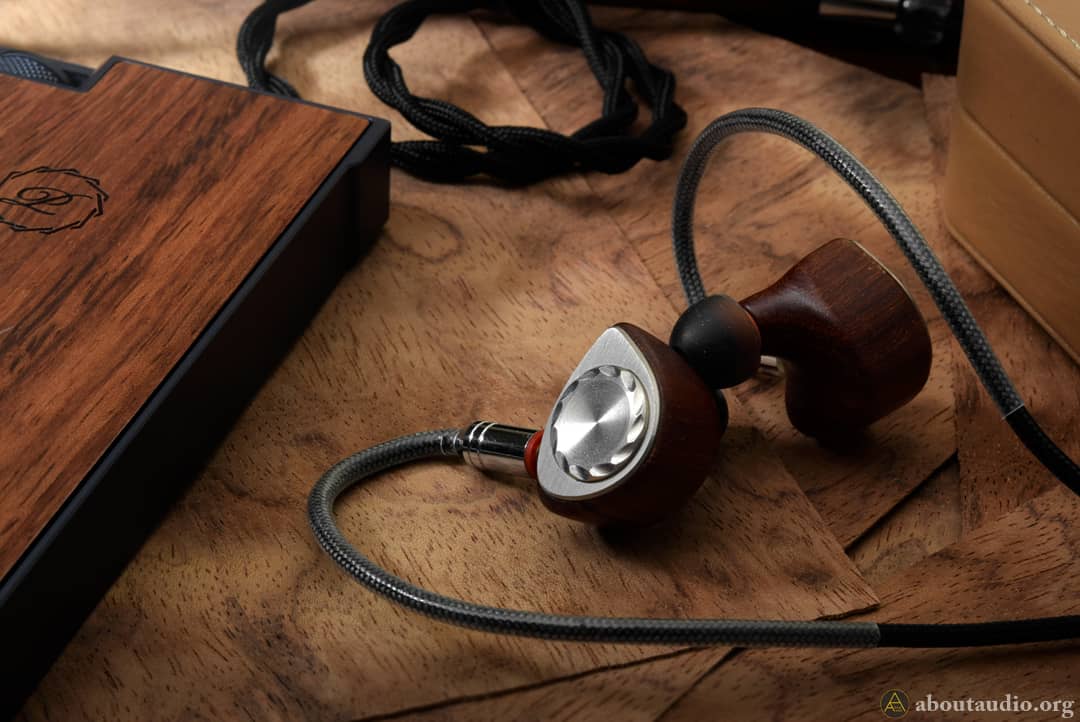
Sound impression – Mids
Mids are naturally connected to the lows yet clearly and prominently presented. Just as the lows did, mids are scaled large in imaging which is clearly different from vocals that are simply thickened. While “purposely thickened” mids could still be tuned to produce great sounds, for most cases the vocals would become stuffy and fatty, producing excessive vocal reverbs that charge majority space of the headroom. Unlike that, the mids that are originally large in its nature (most cases generated by large, good-quality diaphragms) keeps its vocal lines linear with the entire mid-range approaching fairly evenly. Thanks to that, the mids are meaty, “evenly thick”, and very much full-bodied. The vocals are full of density within its fairly thick body, thoroughly filling the sound stage within its playground.
It is also interesting to see how lows and mids are well divided from each other, despite both of them being very large in size and vibrant in depth. Mids not only does a great job achieving vertical and horizontal space, but also the spacing for front and back. One of the finest, in fact. Phoenix generates a 3D spatial vocal that makes clear distinguishments between every single layer, yet I cannot sense one bit of artificial or disparate feeling. I believe this was possible due to minimizing the driver numbers along with constructively using the wood housing and the chambers. Not only that, but the vocals are slightly soaked with airiness and transparency, providing extra clarity and a mild freshness to its atmosphere. The tone is very organic like water, though the vivid texture exposures and fancy decoration raining from the trebles keeps the music going on with enjoyments. Keeping the sound plain as possible, yet slightly topped with spices that would prevent it from getting bland.

Sound impression – Highs / etc.
What is different from a lot of other electrostatic IEMs, is that the treble details are not followed up with that white-ish background. I was trying to figure out the best way for representing that, but let me make an attempt to further explain what I am talking about: So for bright sounding IEMs, especially EST-powered IEMs, show vibrant, strong treble performances with high clarity and transparency. These treble boosted sound signatures usually achieve further details for the ultra highs, but also followed with that forceful and strong white-ish background which would get fatiguing after some listening session – that fatiguing background is what Phoenix decided to omit, instead only preserving the treble texture and details. So Phoenix delivers glittery sparkles on the trebles with plentiful exposure in texture and power but still keeps that pitch-black background brightness, allowing all those details to pop-out but in a comfortable manner.
Staging is also the strongest pros from these. The vast outer headroom created by the gigantic imaging of the bass paired with spatial and large mids, and last but not least, the multi-layering treble details powered by electrostatic drivers. Phoenix shows one of the largest headroom and soundstage among the price range – perhaps Phoenix’s staging size could punch up the bar far higher and compete with $2000~ IEMs.
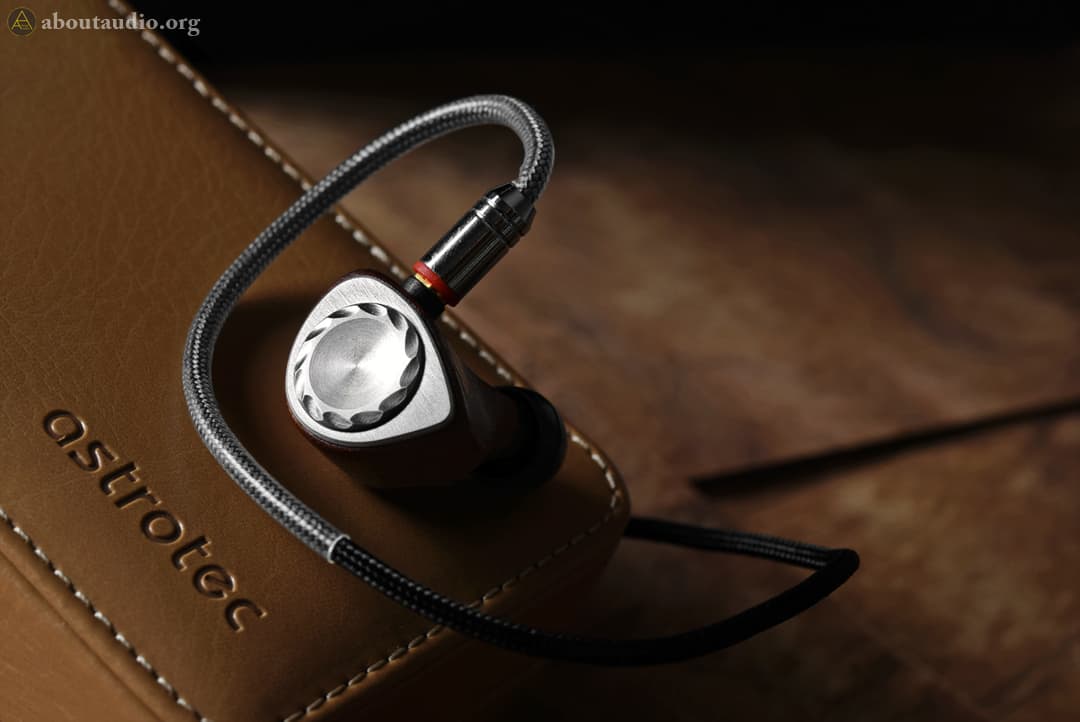
Eartip / Cable matching
The cable differences affect Phoenix with no small changes. Phoenix shows clear likes and dislikes when it comes to pairing a cable and important to match the right one to bring out its full potential. In general, hybrid cables are not desirable, nor does silver-based cables. A solid pure copper cable is most likely going to work out nicely with Phoenix, especially the ones that add meat and thickens the body to the mids. One good example would be Dunu Hulk which is also the matching I have been using now for a while. This particular matching would deepen the color of the sound, increase the overall density, and furthers with its stability in terms of weight. The brown color match comes as a throw-in.
Eartip selections are a lot easier and work out fairly well with a variety of eartips. Spiral dots and Sedna Earfit for maximum staging, the stock Sony hybrid tips and Spinfits for closer imaging, Acoustune AET07 for extra air and brightness, and Acoustune AET08 and Final E-Type for more bass and higher density. My personal favorite is Spinfit CP145, which has a slightly wider bore compared to the familiar CP100. I disliked matching with CP100 as the staging feels to be altered (or even distorted) and makes the overall presentation distracted. Unlike that, CP145 brings in the focal point closer nicely and gently with minimum altering done to the staging.

Verdicts
It was funny enough to realize that Phoenix sonically resembles the Han Sound Audio Torfa cable itself. I was amazed by the sound earlier last year with the prototype and now surprised once again with the official version. My first impression could have been overreacted or a little withered as many other fancy flagship IEMs appeared during the gap, yet Phoenix still, and thoroughly, amazes me and bring satisfaction.
“Is it that good?”, “Yeah, it really is that good.”
I have especially high faith with these and would consider Phoenix to be one of the very best flagship IEMs you could buy for a more reasonable price, punching its price tag far up to the $2000 range or higher. If you were ever planning to reach for your ultimate choice of IEM, seriously consider Phoenix as one of them as there is a high chance of it being a stellar solution for a lot less cost.
RELATED REVIEWS
Astrotec Volans Astrotec Delphinus 5
Thanks to Astrotec for providing Phoenix in exchange for an honest impression/feedback.
I am not affiliated with Astrotec and none of my words were modded or asked to be changed.


